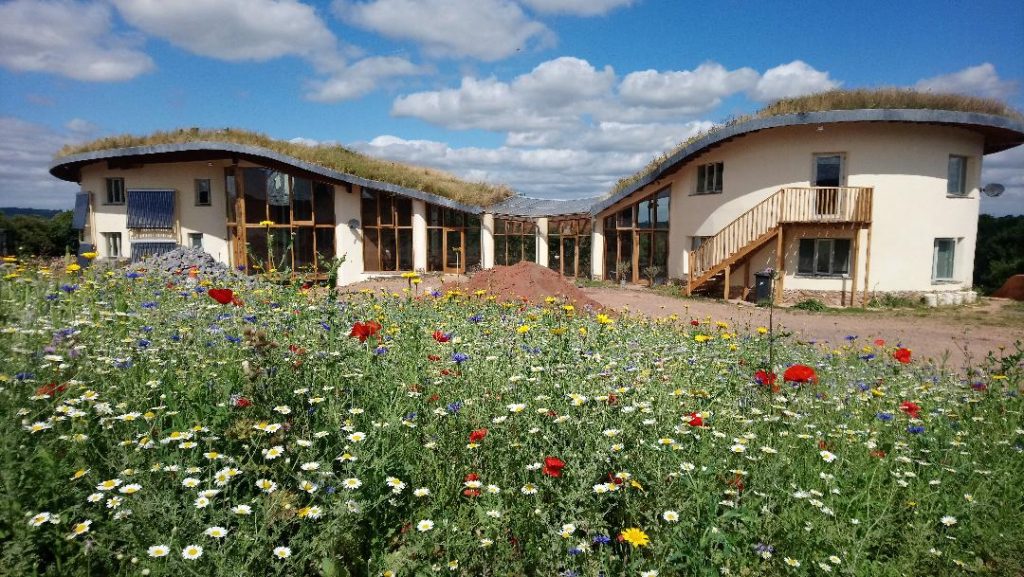Earth is a traditional means of building used across the globe. Earth buildings over 200 years old can be found in the south and east of England, Europe and central Africa. It is a construction often associated with low income dwellings, being a material that is accessible freely and easily, to all. Today, with growing awareness and concern for sustainability, earth construction – along with other natural materials – has undergone a renaissance and is becoming increasingly popular as a low energy, low cost, highly sustainable construction technique.
Earth construction is a straightforward, if time-consuming, technique requiring little in the way of specialist training, much of which can be gained on site. It allows a flexibility in design and detailing that is hard to manage in more contemporary materials. Curves, alcoves and decorative features can all be created within the wall at the time of building. Rectilinear structures are also possible, although crisp geometric corners are harder to achieve due to the soft nature of the material and the rendering material required to protect the wall from weathering.
The three main strategies for building in earth are: rammed earth, using a fairly-dry mix; cob/clay lump with a wetter straw-blended mix; and earth blocks (known as clay lump or adobe).
The traditional method for creating earth blocks is by manually mixing earth, straw and water together and inserting the mix into pre-made templates (form work). This is a very low energy (usually wellington boot clad feet!) but long process, when you consider the number of bricks that are required to make a domestic house. There are a number of machines that can mix and create the blocks, which speeds up the process, but further adds to the embodied (the amount of energy used in construction) energy of the brick.
Once the blocks are made (which can be done off site, but the greater the distance the greater the transportation energy required), application is then almost exclusively by hand. There is one exception under development in East Anglia: the new ‘ Betablock’ is a very large lego-style unit that is currently undergoing testing and copyright. The block is designed to be hoisted by a mechanical lifting device and lowered into place on the wall, with male and female connections locking together between two levels of block work. This offers the opportunity for a much higher speed construction. The blocks are scaled such that it takes 3 minutes to build 1m2, but once again mechanical intervention increases the embodied energy of the construction relative to traditional construction methods.
Due to the mass of the wall – earth walls are unlikely to be less than 300mm thick – they make highly efficient thermal stores, storing thermal energy during the day, and gradually releasing the energy during the night to moderate temperatures. This serves to regulate internal temperatures and humidity but does not have the thermally insulating properties as required by building regulations. It is currently, therefore, necessary to apply a natural, breathable insulating layer internally.
Undoubtedly the potential for creating a unique, highly sustainable home, is magnificent with this flexible, accommodating material.

